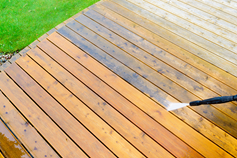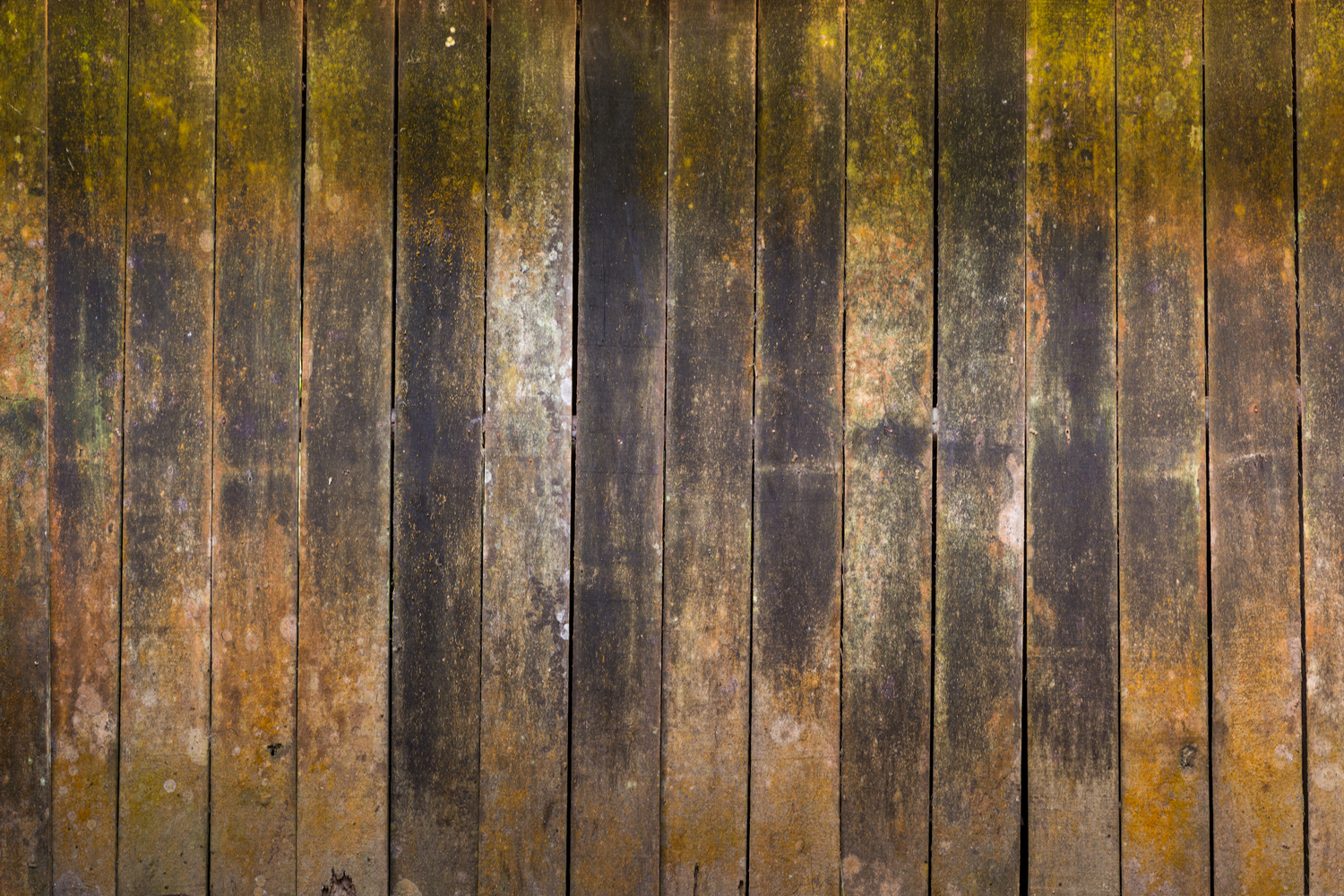If your home has a deck you will probably have to deal with cleaning mold off of it at some point. There are several different materials that can be used for decking: pine, redwood, cedar, composite, pressure treated, and many more. A deck is a large investment that adds value to your home.

Whether your deck is often covered with shade or exposed to the elements, mold will be attracted to it. It can be painted or stained, mold really doesn’t care. If you want to control mold growth or remove it, you will have to perform periodic deck cleanings. One thing you will want to avoid using is chlorine bleach. Chlorine bleach will kill surface mold but the chlorine in the bleach will not penetrate. Chlorine is scientifically designed NOT to penetrate any type of porous materials. Besides that, bleach is toxic to plants and is bad for the environment. You put a lot of time, effort, and money into your landscaping. It would be a shame to kill your landscape plants while trying to beautify your deck.
Mold In Nature
There are thousands and thousands of different species of molds. Mold is attracted to organic materials that are damp or moist and your deck certainly reaches that condition at times.
When mold grows on your deck, it’s ugly, smelly, and dangerous. Mold can cause allergic reactions in people who inhale its spores or physically come into contact with it. Mold will also attack the structural integrity of the decking materials, causing rot and unsightly discolorations.
As you probably have heard, the Centers for Disease Control and Prevention (CDC) reports that mold can cause health-related problems for people with certain mold sensitivities. Mold can aggravate asthma and cause allergic reactions like coughing, shortness of breath, and skin and eye irritations.
If someone in your home has a problem with his or her immune system, mold can be particularly hazardous. White blood cells, antibodies, and other components, including organs and lymph nodes, make up your body’s immune system.Weakened immune systems can include people suffering from HIV/Aids, undergoing cancer or other chemotherapy treatments, or have viral hepatitis. Even taking some types of medications can weaken a person’s immune system.
Materials to Clean Decking
Pressurized steam is the best way to clean your deck, but a pressurized steam cleaner is a tool unavailable to most of us. Any pressure washer that can deliver 800 to 1200 psi (pounds per square inch) will make a good substitute for pressurized steam. Combining a pressure washer with a simple cleaning solution will work just as well in most situations. When using a pressure washer on your deck (even a light-duty electric one will work), use a 40-60 degree angled tip. It’s easy to cause damage to the decking material if you use too much pressure or hold a narrow-angled tip too close to the surface. Once the cleaning is finished, be sure to thoroughly rinse your deck with clear water from a garden hose.
The one downside to using a pressure washer on your deck is that that you will also partially or totally remove the finish or protective coating. You will have to re-seal or re-finish your deck after it has completely been allowed to dry.
There are several over-the-counter cleaners you can use to clean mold and mildew from your deck. These cleaners are easily available from local hardware stores or big box retailers. However, if you want to, you can use a variety of more common household products. Fill a bucket and grab a broom or a brush with stiff bristles and try these cleaning solutions:
- Laundry detergent - 1/3rd cup per gallon of water
- White vinegar – a one to one mixture of the vinegar and water
- Baking soda - a one to one mixture of the baking soda and water
Warning: never combine baking soda and vinegar. A chemical reaction takes place releasing carbon dioxide and creating a possibly dangerous “explosion” in your bucket.
If the mold has created staining, you can add an oxygen bleach to help remove the stains. If you resort to using an oxygen bleach product, you may have to follow it up with a deck-brightening product to stabilize the decking material before refinishing the deck.
Preventing Mold from Growing on Your Deck
One of the best ways to keep mold from growing on your deck is to sweep it. By doing so you dislodge any mold spores that have settled on your deck. Many times mold spores fall along with leaves and grass clippings. By keeping your deck free of these things, you are removing a potential mold food source.
Keep your gutters free flowing so that water does overflow and end up saturating the deck underneath them. Doing everything you can to allow the deck to dry is a good idea. When sweeping, also use a putty knife or a similar tool to remove any debris that gets caught in between individual deck boards. This will enhance water runoff and allow the board edges to also dry quicker.
Mold is a natural occurrence. If the right conditions exist, it can and will grow on your deck. Other than periodic cleanings, decks should be treated with an all-weather, waterproof sealant. These sealants can be brushed on, rolled on with a paint roller, or sprayed on with a garden-style pump-up sprayer. One tip though, whenever you apply sealant to your deck, you should cover any nearby plants to protect them from getting accidentally sprayed or splashed with the sealant.
Professional Help Is Available
If you see mold on your deck, or think you may have a problem with mold inside your home, you can always contact Water Mold Fire Restoration at 800-905-0277. We have certified mold remediation experts that can answer any questions you may have concerning mold and removing mold safely. We answer our phones 24 hours a day, 7 days a week. Our initial mold inspection and consultation are free with no obligation. If you would rather contact us by email, you can do so at help@watermoldfire.net.








